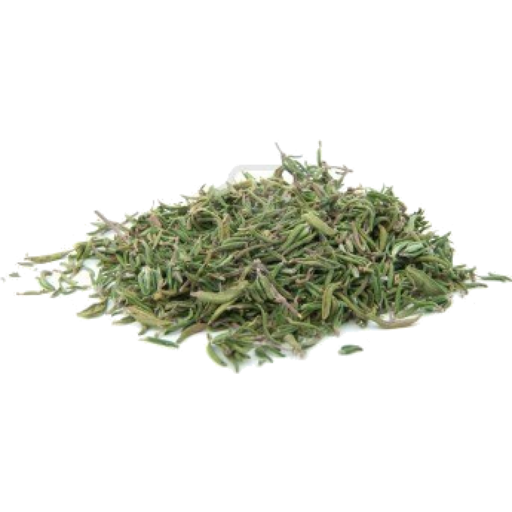Description
The species of thyme most commonly used in food is Thymus vulgaris, but there are hundreds of others, including English, French, and lemon thyme, a yellowish variety that has a strong lemon scent and flavor. In all cases, it is the small, tender leaves that are used for seasoning, while the thin, woody, and sometimes wiry stems are avoided. The small clusters of white to pale purple flowers, which form distinctive balls at the end of the stems, are also usually avoided for cooking, although they are sometimes used in teas and herb sachets.
Like many other culinary herbs, thyme is extremely hardy, although it is sensitive to frost. It has evergreen simple leaves that range in color from almost grayish to rich green, and if harvested with care, the leaves can be used year round. Some cooks in frost-prone areas grow a plant through the spring and harvest the bulk of the leaves in the summer, drying them for use in the winter. If the leaves are dried, rather than fresh, cooks should keep them in an airtight container in a cool dark location to keep as much of the flavor as possible, and discard the leaves after one year of storage.
European cuisine, especially French food, relies heavily on thyme as a seasoning. It is a major constituent in most French herb mixes, especially those used in the Southern regions of France, and commonly appears in French seafood dishes. Italian cooks also use the herb, and many Greeks cultivate lemon thyme to season dolmas and other ethnic dishes. Some North African nations use it as well, especially in Moroccan food. Because of the mild flavor, it is difficult to over-season food with thyme, and it is a versatile culinary spice which should be stocked in every herb cupboard.

